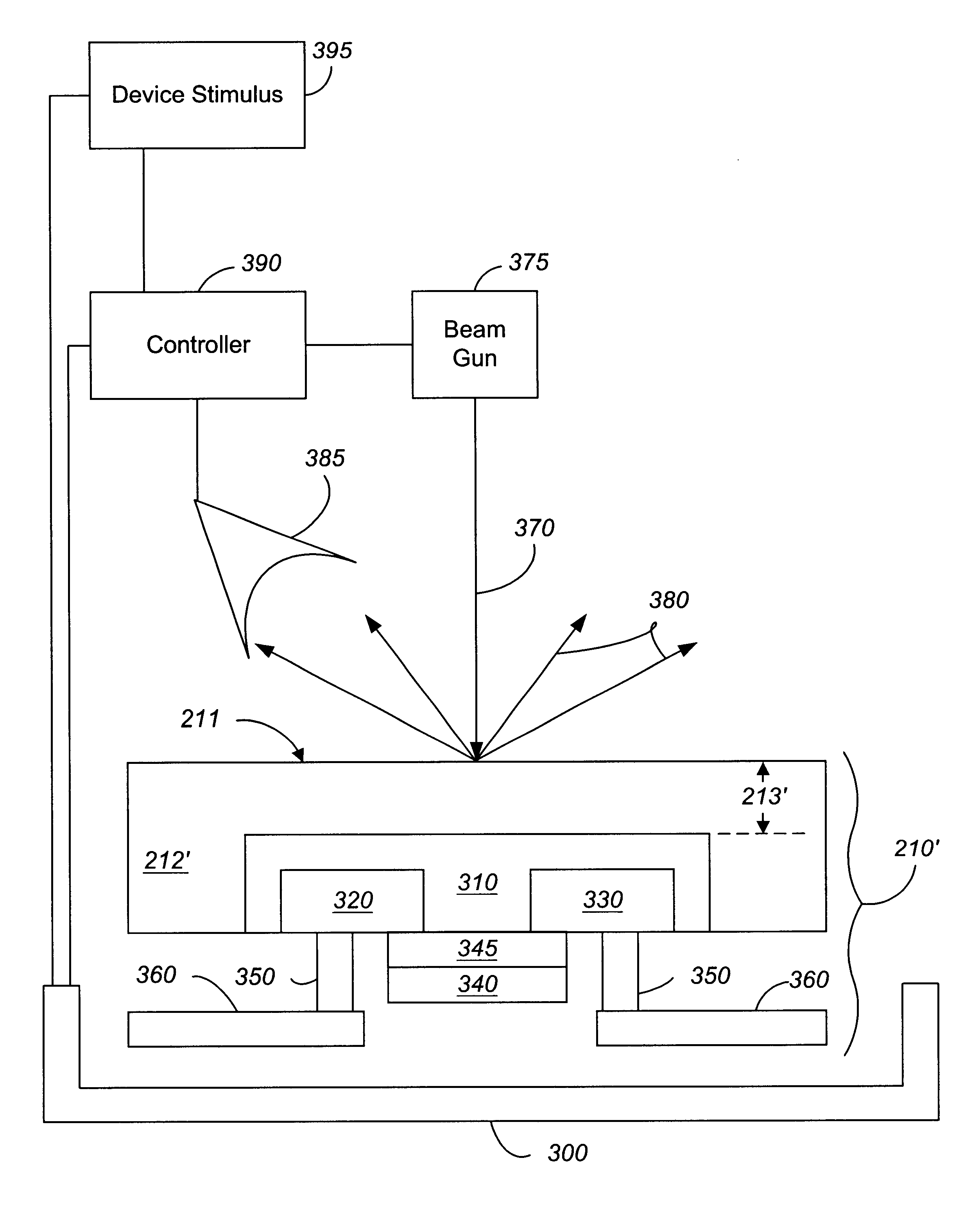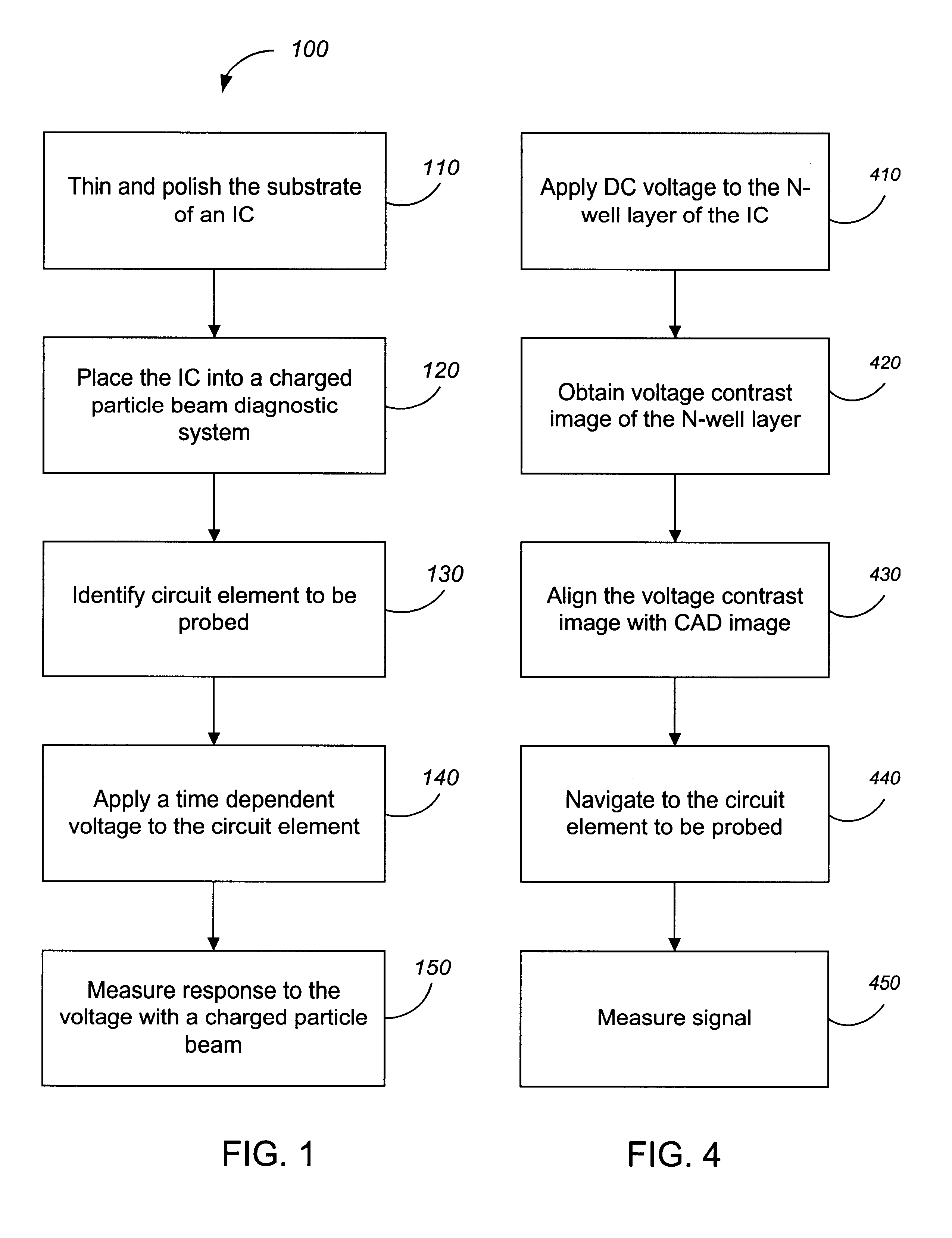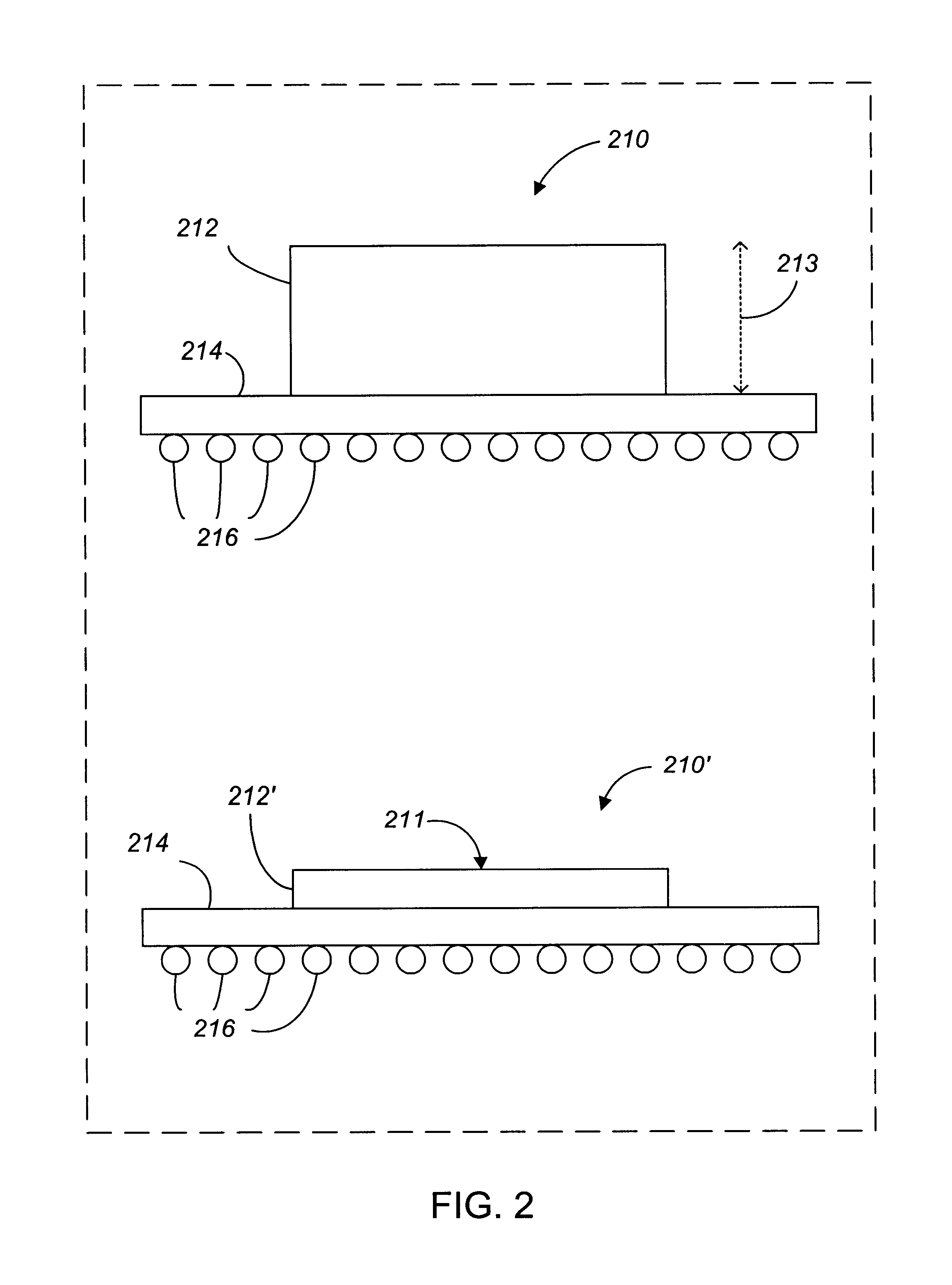Measuring back-side voltage of an integrated circuit
a backside voltage and integrated circuit technology, applied in the direction of individual semiconductor device testing, semiconductor/solid-state device testing/measurement, instruments, etc., can solve the problems of complex device design, specialized equipment, time-consuming device modification after manufacturing, and the inability to build the necessary probe points for probing, etc., to facilitate reverse engineering the ic, enhance etching, and add in-circuit editing capability
- Summary
- Abstract
- Description
- Claims
- Application Information
AI Technical Summary
Benefits of technology
Problems solved by technology
Method used
Image
Examples
Embodiment Construction
A charged particle beam diagnostic system can be used in accordance with the invention to diagnose, characterize, or modify circuit elements of a flip-chip or other IC by providing access to underlying structures through a thinned silicon substrate. This can be done even on ICs that cannot be accessed as a whole but can be accessed when sufficiently disassembled, and so the invention has application to failure analysis.
As shown in FIG. 1, one method 100 in accordance with the invention has five major steps. Preliminarily, the substrate of an IC, e.g., a flip-chip IC, is thinned and polished (step 110) as explained in more detail in reference to FIG. 2. The thinned IC is placed in a charged particle beam diagnostic system (step 120) as shown in FIG. 3. Appropriate systems include the Schlumberger IDS 10000da e-beam probe system available from Schlumberger Semiconductor Solutions of San Jose, Calif. Using this system, a circuit element to be probed is identified (step 130); an impleme...
PUM
 Login to View More
Login to View More Abstract
Description
Claims
Application Information
 Login to View More
Login to View More - R&D
- Intellectual Property
- Life Sciences
- Materials
- Tech Scout
- Unparalleled Data Quality
- Higher Quality Content
- 60% Fewer Hallucinations
Browse by: Latest US Patents, China's latest patents, Technical Efficacy Thesaurus, Application Domain, Technology Topic, Popular Technical Reports.
© 2025 PatSnap. All rights reserved.Legal|Privacy policy|Modern Slavery Act Transparency Statement|Sitemap|About US| Contact US: help@patsnap.com



